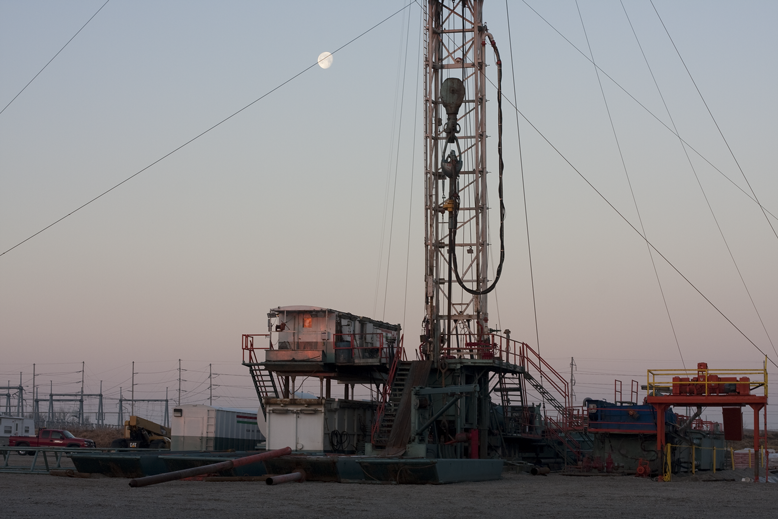Now we get to fill out form 5695. Not only that but the credits are good until 2016 when Obama retires. But first the Tax Credits.
Not there silly here:
http://www.energystar.gov/index.cfm?c=products.pr_tax_credits#c6
| Geo-Thermal Heat Pump | Geo-Thermal Heat Pump | Same criteria as ENERGY STAR:Closed Loop: EER >= 14.1 COP >= 3.3Open Loop: EER >= 16.2 COP >= 3.6Direct Expansion: EER >= 15 COP >= 3.5 |
30% of the cost | All ENERGY STAR geo-thermal heat pumps qualify for the tax credit.Use IRS Form 5695 |
:}
In this day and age everybody should know what a geothermal heat pump is, but if not:
http://en.wikipedia.org/wiki/Geothermal_heat_pump
A geothermal heat pump (GHP) system is a central heating and/or air conditioning system that actively pumps heat to or from the shallow ground. It uses the earth as either a source of heat in the winter, or as a coolant in the summer. This design takes advantage of moderate temperatures in the shallow ground to boost efficiency and reduce operational costs. It may be combined with solar heating to form a geosolar system with even greater efficiency.
Geothermal heat pumps are also known by a variety of other names, including geoexchange, earth-coupled, earth energy, ground-source or water-source heat pump. The engineering and scientific community tend to prefer the terms “geoexchange” or “ground-source heat pumps” because very little of the heat originates from true geological sources.[1] Instead, these pumps draw energy from shallow ground heated by the sun in the summer. Genuine geothermal energy from the core of Earth is available only in places where volcanic activity comes close to the surface, and can usually be extracted without the help of a heat pump.
:}
Anyway the first one on the list is my favorite becaused the closed loop is the most flexible. You can run the piping horizontal to the ground if there are mining issues. Or you can go straight down like a well.
http://www.residential.carrier.com/products/geothermalheatpumps/gt-px.shtml

Ultra-High-Efficient Geothermal Unit for Total Home Comfort
Carrier’s popular GT-PX series is our highest rated geothermal unit, featuring Puron® refrigerant; a two-stage compressor for efficiency; variable speed blower for comfort; E-coated coil; microprocessor control; and a robust, insulated cabinet for quiet operation. Available in vertical top flow, vertical bottom flow and horizontal flow, all with optional hot-water generator. In sizes from 2 through 6 tons.
:}
I used to be fascinated by Open Loop systems because they seem so natural. Essentially if you are near a lake or a deep pond you vent your waste heat there. But now I see them as potential environmental disruptors but again this about tax credits. They don’t really care about the environment.
http://www.bryant.com/products/geoheatpumps/index.shtml
GT-PX Geothermal
- Up to 4.6 COP (closed loop)
- Up to 27.0 EER (closed loop)
- Up to 5.1 COP (open loop)
- Up to 31.5 EER (open loop)
- Two-stage unloading scroll compressor
- Variable speed blower motor
- Puron® refrigerant
- 10-year limited warranty on all compressor & major refrigeration components. 5-year limited warranty on other parts
GT-PG Geothermal
- Up to 4.2 COP (closed loop)
- Up to 20.2 EER (closed loop)
- Up to 5.1 COP (open loop)
- Up to 28.1 EER (open loop)
- Single stage scroll compressor
- PSC blower (optional variable speed blower motor)
- Puron refrigerant
- 10-year limited warranty on all compressor & major refrigeration components. 5-year limited warranty on other parts
GT-G Geothermal
- Up to 3.8 COP (closed loop)
- Up to 18.5 EER (closed loop)
- Up to 4.1 COP (open loop)
- Up to 23.9 EER (open loop)
- Single stage scroll compressor
- PSC blower (optional variable speed blower motor)
- 10-year limited warranty on all compressor & major refrigeration components. 5-year limited warranty on other parts
As you can see they all have open loop options because a heat exchanger doesn’t care where it puts it’s heat.
The final version is pretty exotic. I guess they are appropriate if you are in an extreme environment:
http://www.renovation-headquarters.com/heating-geothermal.htm
Direct Expansion (DX): A geothermal heat pump system in which the refrigerant is circulated in pipes buried in the ground, rather than using a heat transfer fluid, such as water or antifreeze solution in a separate closed loop, and fluid to refrigerant heat exchanger. A DX system includes all of the equipment both inside and outside the house. DX systems may be single or multi-speed.
http://www.mrslim.com/Products/subCategory.asp?ProductCategoryID=24&ProductSubCategoryID=140or
or
or
http://www.geothermix.com/english/product/direct1.html
Direct Expansion “DX” Units
A direct earth coupled heat pump or “DX” heat pump is one that has its refrigerant evaporator / condenser in direct thermal contact with the earth from which heat is either extracted from during the heating mode or introduced to during the cooling mode of operation.
 The general refrigeration cycle of our DX machine is similar in nature to a conventional water-to-air or water-to-water heat pump in that there exist a compressor, expansion device, reversing valve, and refrigerant-to-air heat exchanger. Conventional technology concerned with heat pumps relies upon the transfer of heat from the ground by means of a secondary heat exchanger system and working fluid, e.g., water, which is pumped to the geothermal unit located in the heated structure. The conventional heat pump has it’s own internal primary heat exchanger which extracts heat (heating mode) or rejects heat (cooling mode) from this water, which is then pumped back to the earth to be reheated.
The general refrigeration cycle of our DX machine is similar in nature to a conventional water-to-air or water-to-water heat pump in that there exist a compressor, expansion device, reversing valve, and refrigerant-to-air heat exchanger. Conventional technology concerned with heat pumps relies upon the transfer of heat from the ground by means of a secondary heat exchanger system and working fluid, e.g., water, which is pumped to the geothermal unit located in the heated structure. The conventional heat pump has it’s own internal primary heat exchanger which extracts heat (heating mode) or rejects heat (cooling mode) from this water, which is then pumped back to the earth to be reheated.
DX systems similarily use a ground coil system, however, the working fluid is a refrigerant and the copper groundloop is the primary heat exchanger. Such geothermal heat exchange is an efficient and effective way of achieving heat exchange in heating and air conditioning systems, and especially heat pump type systems. Since the ground temperature is relatively constant at 48 °F at a depth below the frost line, the available heat is constant.
 The elimination of the secondary earth heat exchanger (typically plastic in nature) and its associated working fluid reduces the temperature difference required between the ground and the evaporating refrigerant yielding a higher suction pressure than a conventional system under similar circumstances and thus a higher efficiency.
The elimination of the secondary earth heat exchanger (typically plastic in nature) and its associated working fluid reduces the temperature difference required between the ground and the evaporating refrigerant yielding a higher suction pressure than a conventional system under similar circumstances and thus a higher efficiency.
:}
I like the closed loop the best:
If you are in Las Vegas and you need one installed try:
http://www.plumber-las-vegas.com
:}













 ST. PETERSBURG, FLA. – August 3, 2007 –
ST. PETERSBURG, FLA. – August 3, 2007 – 




